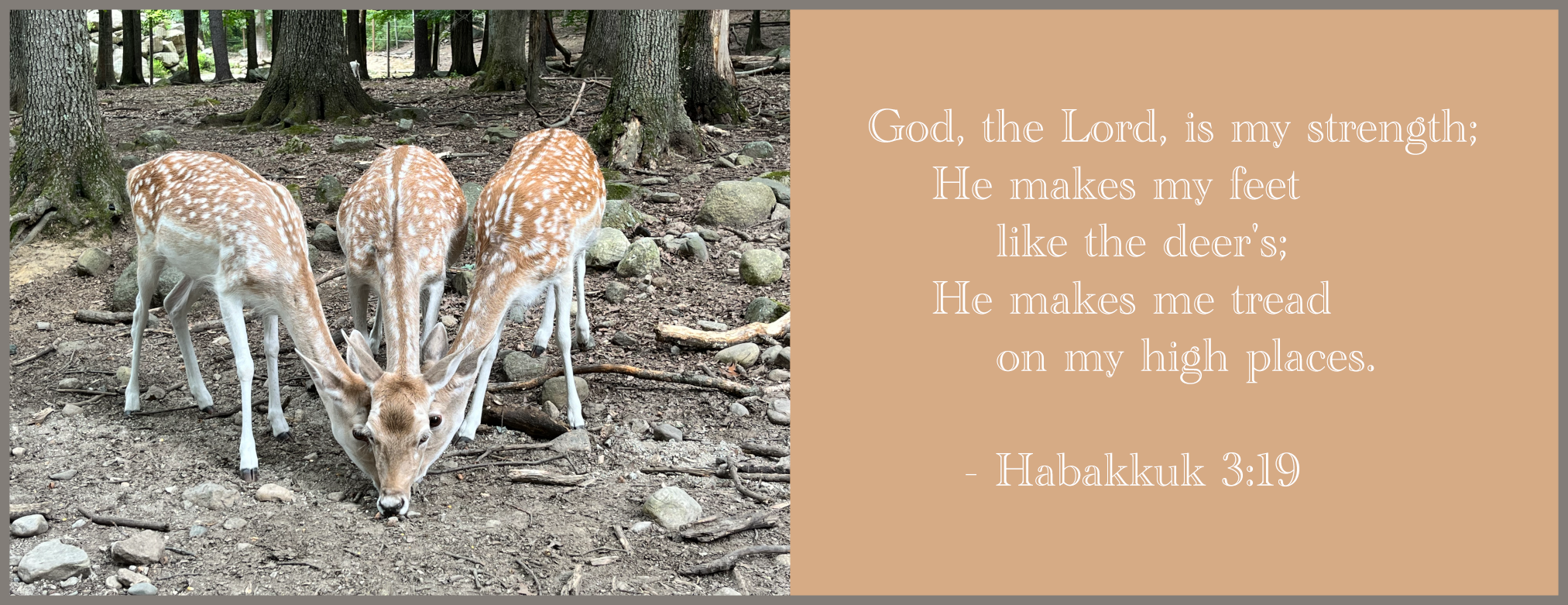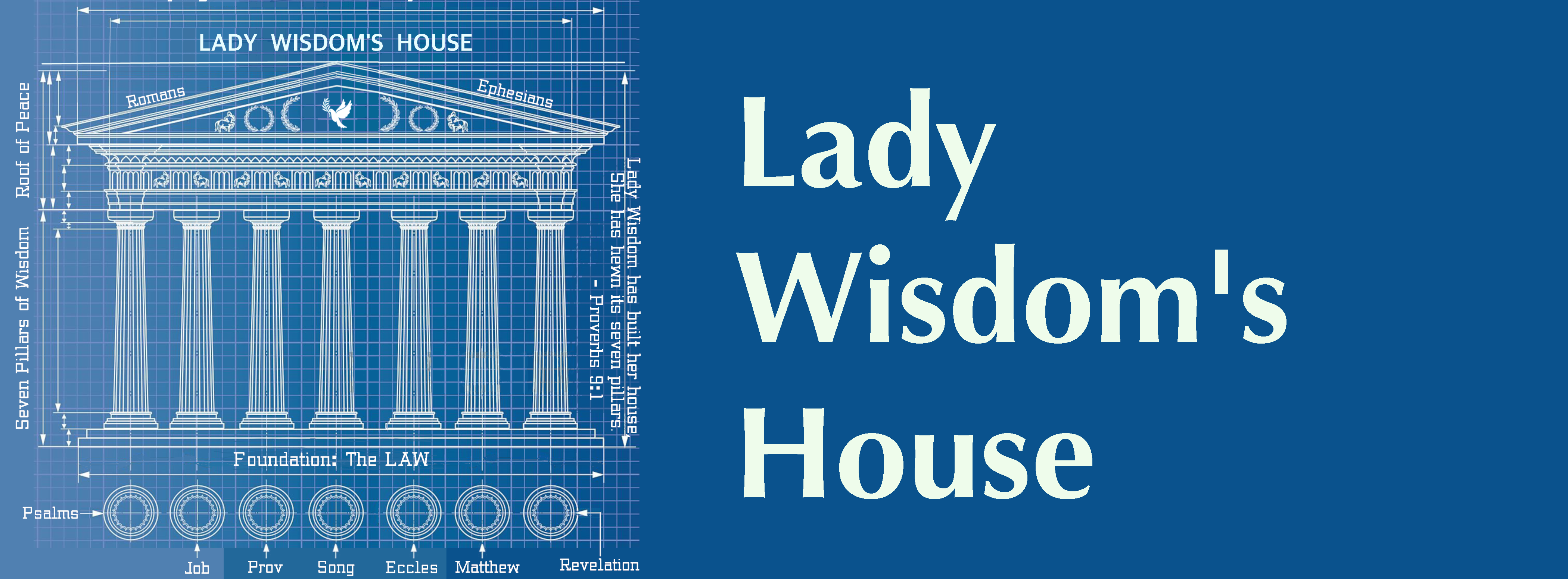Habakkuk Part 7
896 words long.
Published on 2024-03-30

Photographed by Jaime Chernoch at Southwick's Zoo, August 31, 2024.
Praise amid Barrenness
One more observation about Habakkuk: the shepherd. The final section lists six agricultural failures. They were both literal and symbolic.
- Fig tree does not bud. The fig tree represents the nation or political Israel. Jesus did not restore that at his first coming. Instead, he cursed it: In the morning, as [Jesus] was returning to the city, he became hungry. And seeing a fig tree by the wayside, he went to it and found nothing on it but only leaves. And he said to it, “May no fruit ever come from you again!” And the fig tree withered at once. (Matthew 21:18-19)
- No fruit on the vines. The grapes represent the priests. Wine was part of the rituals. Jesus said that he would not drink again from the fruit of the vine until he returned. The old sacrificial system was not restored when Jesus came. Instead, it soon ended.
- The labor of the olive may fail. The olive tree represents the prophets. Olive oil is the oil of joy, of the Holy Spirit. After Malachi, there were no prophets in Israel for centuries, until John the Baptist and Jesus arose.
- The fields produce no food. The bread represents both the basic necessities of life and the life sustaining power of the Word of God. Jesus had bread at the fire where they cooked their fish in John 21. He is the bread of life and in communion, we share the bread of his body. Thus Jesus restored the bread.
- The flock be cut off from the fold. This is where the Shepherd comes in. Jesus commissioned Peter in John 21 to be the shepherd for the sheep. This is a major part of the harvest that Jesus restored at his first coming.
- No cattle in the stalls. I am not sure what this symbolizes. Cattle provide strength and are used to plow, bring in the Harvest, and thresh the grain. Perhaps this is the power of the Holy Spirit, come at Pentecost?
Altogether, John 21 tells us that Jesus’ first coming was to supply a shepherd and our daily bread. Restoring some other aspects of the harvest from Habakkuk 3 such as the nation of Israel would have to wait.
It is about time to pivot to Revelation, but first we should say something about the number seventeen. Habakkuk has three chapters and each has a seventeenth verse.
Is he then to keep on emptying his net
and mercilessly killing nations forever? (1:17)
No, God will stop the wicked. In his parable of the net, Jesus says that the final judgment will be like drawing in a net, and the wicked and righteous will be separated so that the evil may harm the good no more. That is the first expression of victory: the rescue of the innocent.
The violence done to Lebanon will overwhelm you,
as will the destruction of the beasts that terrified them,
for the blood of man and violence to the earth,
to cities and all who dwell in them. (2:17)
Already five of the beasts have been destroyed, as prayed for. All other beastly empires will be dealt with at the proper time, a second victory, the judgment of the wicked.
Though the fig tree should not blossom,
nor fruit be on the vines,
the produce of the olive fail
and the fields yield no food,
the flock be cut off from the fold
and there be no herd in the stalls… (3:17)
The Lord provided olives (prophecy), food (the bread of life and the Word), and shepherds (church leaders) as needed. The rest will come later. This is the third victory, the provision of wise leadership and spiritual food, citizenship in the kingdom of God.
So these three 17th verses from the chapters of Habakkuk capture the core problems that Jesus addressed in John 21 or in his ministry in general.
Links to the other articles in this section:
- Connections to other books The scope of inquiry is given. The riddle is connected to Genesis, Psalms 34 and 119, Jeremiah 32, Habakkuk, John 21, Matthew 13, and Revelation 9.
- Defining 153 Noah's Flood is shown to have lasted precisely 153 days.
- Fear 153 is connected to the Fear of the Lord through Psalms 24 and 119, Luke 12 and 2 Kings 17.
- Hope Jeremiah connects a related victory number, seventeen (17), to hope. Then the themes of John 21 are connected to Habakkuk.
- Habakkuk: Part 1 Analysis of Habakkuk 1:1-4. Habakkuk puts questions to God.
- Habakkuk: Part 2 Analysis of Habakkuk 1:5-11. God doubles down: the bitter and hasty Chaldeans are coming.
- Habakkuk: Part 3 Analysis of Habakkuk 1:12-2:1. Habakkuk complains with three threes about innocent people caught in a cruel net.
- Habakkuk: Part 4 Analysis of Habakkuk 2:2-5. God offers a fourfold assurance to the faithful.
- Habakkuk: Part 5 Analysis of Habakkuk 2:6-20. Five woes are pronounced against lawbreakers.
- Habakkuk: Part 6 Analysis of Habakkuk 3:1-16. Prophecy of God's coming six-ply war against the wicked.
- Habakkuk: Part 7 Analysis of Habakkuk 3:17-19. Six laments over a barren harvest and a seventh praise of God in faith.
- The Fifth Trumpet of Revelation The Revelation 9 Plague of Locusts lasts 153 Years.
- Habakkuk's War Revisits the sixth section of Habakkuk with a final insight into God's battle plan.

